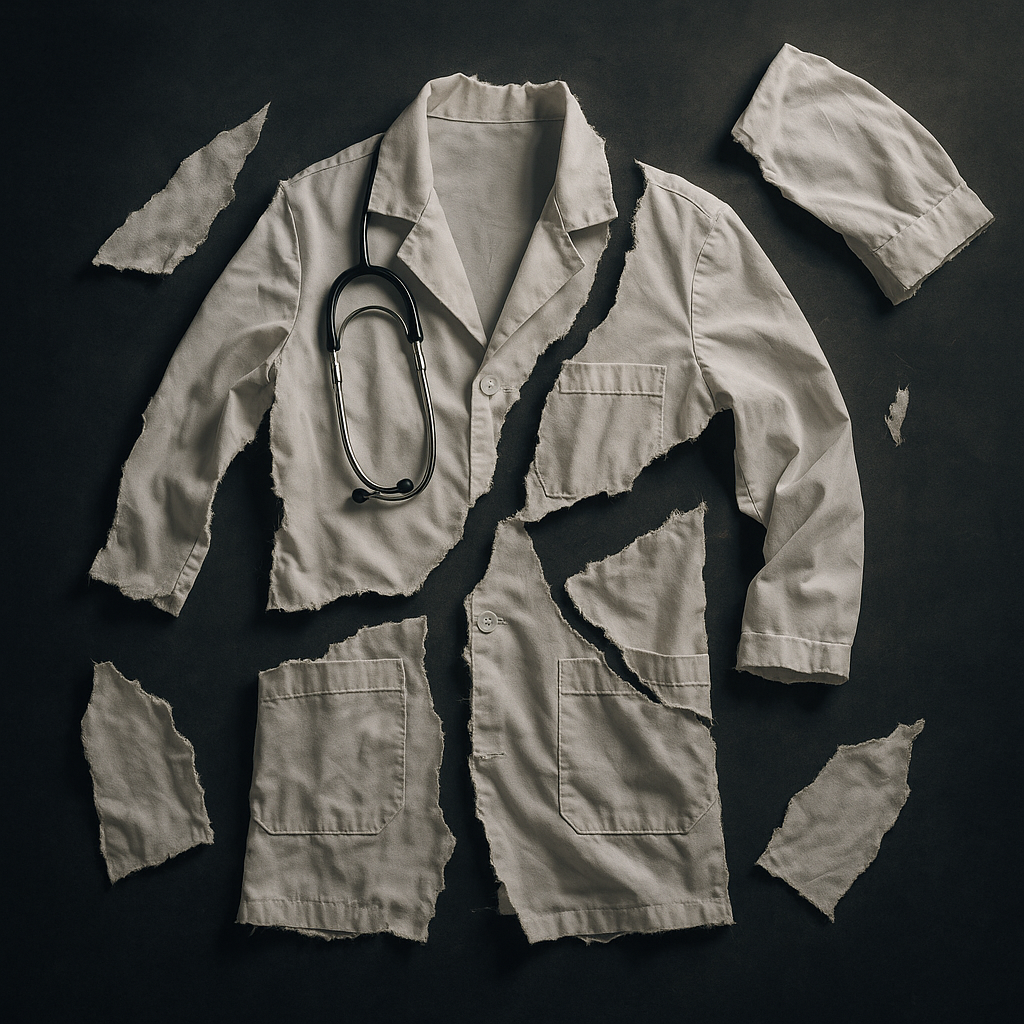By Zainab Shabir
In the tense health-care landscape of Jammu and Kashmir, doctors now tread a fragile line between public perception and professional duty. From the crowded wards of government hospitals to the unfiltered expanse of social media, the profession is facing twin storms: a surge in violence against doctors and rising concerns over ethical breaches by health-care professionals. What emerges is not a neat narrative of heroes and villains but a portrait of an institution under siege.
At the most visible and dangerous end of the crisis are the attacks. In already overburdened hospitals—where doctors juggle long shifts, scarce resources, and swelling patient queues—assaults have become disturbingly common. Recently, the emergency wing of a major government hospital was thrown into chaos when an attendant attacked a doctor following a fatal outcome. Operations were suspended, tempers flared, and demands for tighter hospital security grew louder. This was not an isolated flare-up but part of a pattern in which desperation meets overstretched medical capacity, producing violence in places meant for healing.
The other front is less bloody but equally corrosive—eroding trust from within. In one recent incident, a medical student posted a video from his first day in an operation theatre. Intended as a personal milestone, the clip was quickly condemned as inappropriate, raising uncomfortable questions about consent, patient privacy, and professional conduct. The backlash prompted regulators to tighten digital guidelines, warning doctors and medical students against uploading any material that could breach confidentiality or demean the profession’s dignity.
The irony is striking: some doctors are attacked in wards; others face public outrage online. Yet both phenomena grow from the same roots—a strained system where expectations run high, resources run low, and every misstep, fatality, or ill-judged post can ignite a storm. The pressure is relentless, and neither side—public nor profession—seems ready to trust the other.
Even respected institutions such as Lal Ded Hospital have not escaped scrutiny. Videos filmed on hospital premises, even without direct confidentiality breaches, drew fierce criticism for crossing boundaries and distracting from patient care. In places like maternity and casualty wards, where life’s most vulnerable moments unfold, every action—especially one involving cameras—demands restraint and empathy.
The trust deficit deepens when issues of absenteeism and accountability surface. Many patients and insiders allege that senior specialists routinely avoid evening and night shifts, leaving critical duties to junior residents or interns. In emergency medicine, where seconds count, the absence of experienced hands is not merely a staffing flaw—it can be a death sentence. The case for making senior presence mandatory during high-risk hours is strong: it safeguards patients and strengthens the system’s credibility.
Prescribing practices have also come under the scanner. Patients report being handed prescriptions for branded medicines available only at select pharmacies—often inside or adjacent to the hospital—fueling suspicion of commercial motives. The perception that pharmaceutical companies may influence prescriptions undermines trust and raises ethical red flags. Health authorities now urge doctors to prescribe by generic salt names, a shift that could reduce costs, eliminate vested interests, and restore the image of doctors as patient-first healers rather than industry conduits.

The dilemma—reverence versus suspicion—was poignantly captured by noted columnist and educational counsellor Aubaid Ahmad Akhoon in his 2021 Brighter Kashmir piece, “Doctor: A Saviour or an Executioner.” He wrote that the word ‘doctor’ once symbolized a beacon of hope, with service defined by dignity, honour, and relentless commitment. But he also warned of the profession’s slow moral erosion—of impostors, fake degrees, negligence, and commercial influence—asking whether, in some cases, the healer had become a merchant, even an executioner. His words feel sharper now, with recent controversies laying bare the fragility of medical ethics in an era of commercial temptation and public distrust.
In response to mounting tensions, authorities have taken steps: requiring name tags and white coats for easy identification, ensuring senior doctors in casualty wards, and proposing stronger legal protections for health-care workers. But these measures, while necessary, address symptoms rather than causes. The deeper problems—personnel shortages, decaying infrastructure, and the absence of robust communication between doctors and patients—still fester.
Real reform will demand more than reactive policy. Doctors need both physical protection and the discipline to uphold the highest moral standards. Hospitals require not just more guards but better administration—transparent, accountable, and humane. The public deserves answers to medical failures, but also the humility to acknowledge the crushing demands placed on health workers. Without this balance, the cycle of blame, mistrust, and retaliation will only spin faster.
The health crisis in Jammu and Kashmir is no longer just about equipment or infrastructure; it is about culture, conduct, and credibility. When doctors turn into social-media performers and hospitals become arenas for public outrage, the social contract between healer and healed frays beyond repair. Every actor in the system—doctors, patients, institutions, and regulators—must step back from confrontation and recommit to responsibility, sensitivity, and mutual respect.
For the white coat is more than a garment—it is a symbol of trust. If that trust collapses, the loss will be far greater than professional reputation. It will be the loss of medicine’s very heart.
The views expressed in this article are solely those of the author and do not necessarily reflect the opinions or views of this newspaper